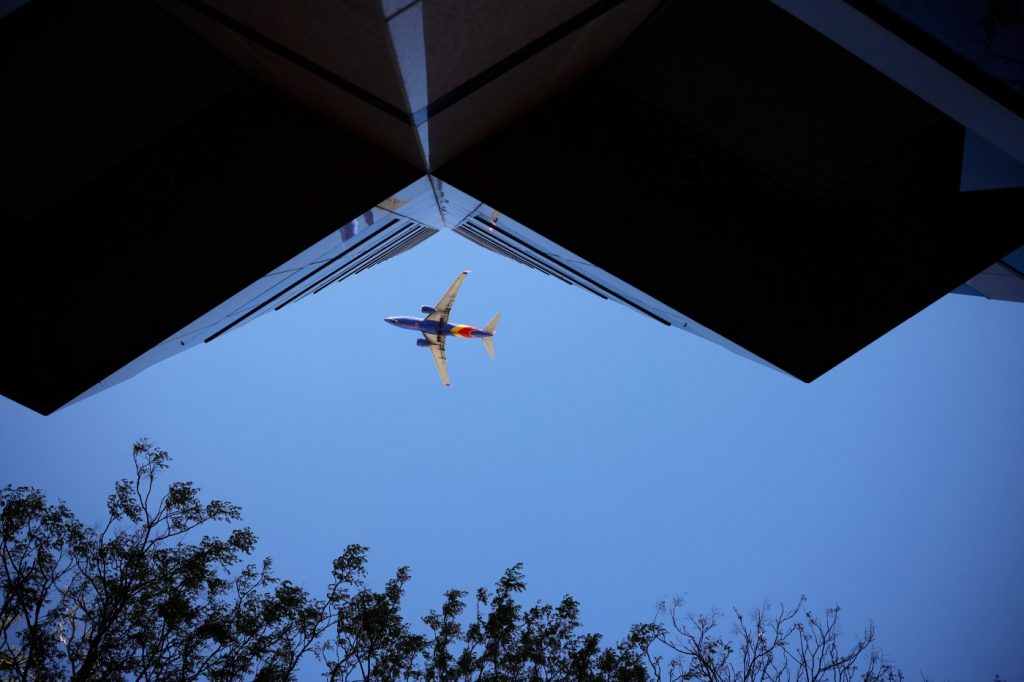SAN JOSE — Passenger travel at San Jose International Airport is showing signs of fading, a loss of altitude in travel activity that has left the Silicon Valley aviation hub well short of its pre-coronavirus heights.
In March 2024, San Jose Airport handled 930,522 passengers, according to the travel center’s most recent passenger activity report.
That was 13.4% above the passenger totals for February — but 3.6% below the passenger activity reported for March 2023, San Jose International Airport reported.
Over the 12 months that ended in March, San Jose Airport handled 12.05 million passengers. That was down 0.4% from the 12.1 million passengers the South Bay travel hub accommodated during 2023.
Plus, the airport’s performance over the most recent 12-month period is far below the record heights San Jose achieved in 2019, the final year before the outbreak of the coronavirus and the resulting collapse of the worldwide travel industry due to government-imposed business shutdowns and transportation restrictions.
“Prior to the pandemic, a significant portion of San Jose Airport’s traffic was driven by business travel,” airport officials said in comments emailed to this news organization. “We suspect that the slow rebound in business travel, which is yet to fully recover globally, is having a significant impact on our recovery.”
The 12.05 million in passenger traffic over the one-year period that ended in March is a whopping 22.7% below the 15.65 million passengers San Jose Airport handled in 2019, which was the last full year before the coronavirus-spawned shutdowns began in March 2020.
San Jose Airport is far from alone among the three major airports in the region when it comes to a feeble post-coronavirus recovery.
Over the year-long period that ended in February 2024, Oakland International Airport handled 11.27 million passengers. That was 16% below the 13.38 million passengers Oakland accommodated in 2019.
Related Articles
California wants to crack down on airport line-skipping for Clear members
SFO strikes back against Oakland Airport with lawsuit over ‘San Francisco Bay’ name change
What’s in a name? Oakland airport’s identity crisis has two cities in a tug of war
Oakland International Airport to add San Francisco Bay to name — legal war looms
Opinion: Proposed Oakland airport name change would just confuse everybody
San Francisco International Airport handled 50.71 million passengers during the 12-month period ending in February 2024. That was 11.8% below the 57.49 million passengers that SFO accommodated in 2019.
At the present pace of recovery — or lack of recovery — it’s entirely possible that the Bay Area’s three major airports might never climb back to the altitudes they enjoyed in 2019 just before the coronavirus outbreak.
San Jose airport officials are well aware that the South Bay travel gateway isn’t close to its prior heights.
San Jose airport stated in the email comments. “We have welcomed the arrival of low-cost carriers, ZIPAIR and Spirit Airlines, that have entered the market to meet the growing demand for more leisure and family travel.”
ZIPAIR has added a flight between San Jose and Japan, which means six weekly departures from San Jose to Tokyo Narita International Airport.
Spirit Airlines has added nonstop flights between San Jose and the destinations of Los Angeles; Portland, Oregon; and the Baltimore-Washington region.
“Post-pandemic, we are adapting to the market,” San Jose airport officials stated in the comments.


